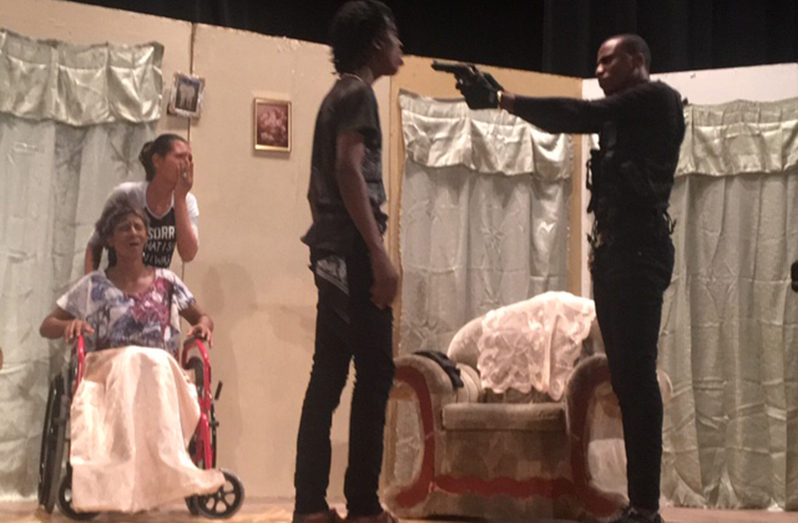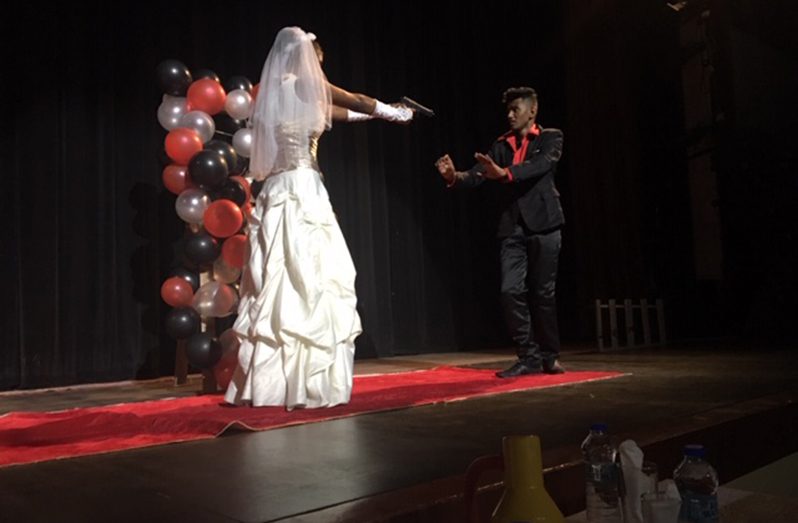By Francis Quamina Farrier
No doubt you have observed an increase in violent themes in the Guyanese theatre and other performing arts in recent years. One which is obvious is the use of guns in more recent Guyanese plays. As a veteran in the field of theatre, I have been asked to comment on this developing trend. In this article, I comply. Violence in plays is really nothing new. Now let us turn back the clock by a few centuries and gloss over some of the plays by William Shakespeare which had quite a lot of violence. “Romeo and Juliet”, “Julius Caesar”, “King Lear”, “Othello” and “Macbeth.” In the play Julius Caesar, the title character is stabbed to death by a group of conspirators in full view of the audience. Romeo and Juliet both die by suicide. Macbeth comes to his end by being beheaded.
During the past decade in Guyana, the use of guns as part of the plots of plays has been increasing. Some of the plots have included extrajudicial killings played out in full view of audiences. Were children allowed to be part of the audiences of those violent Shakespeare plays? We well know that some of those Shakespeare plays were and continue to be staged by students in High Schools, Colleagues and Universities. Those plays have lots of violent scenes which depict human nature in all its many complexities.
So how should the recent plays by Guyanese playwrights and the messages of domestic violence and gun violence be, especially since lots of the violence include guns? Up for discussion is whether such a high percentage of plays with a high percentage of violence be a good way for playwrights to focus on at this time. The answer is from the theatre-goers of Guyana who turn up in large numbers to such plays. There is, of course, the way in which many members of the audiences react to plays of this genre. Many would giggle or laugh at the most dramatic scenes in a play. Scenes, which for more discerning theatre-goers, would garner rapt attention, sometimes even tears. Viewing a play at the National Cultural Centre a few years ago, there was a scene in which a male character was raining blows on a female character, and seated behind me was a mature woman who was laughing her head off.

For safety, there are rules about the use of a gun in a play. For example, “Never point a gun directly at the actor playing the victim.” There is a technique of how that can be done to make it look real from the perspective of the audience. Many toy guns are now manufactured to look like real guns, and a tragedy can occur if a switch is made with a real (loaded) gun. One must be extra careful when a gun is an item of ‘property’ for use in a shooting scene of a play. Some playwrights would never write a scene in a play in which an active shooting takes place on stage before the audience. That is so not only for the safety of the actors but also for the safety of the audience. There is that saying, “Prevention is better than cure.” People go to the theatre for entertainment, excitement and education.
Theatre rules were made over the centuries by those who have had long years of experience, and who plan and direct performances in a way to have zero possibility of a serious or worse yet, a deadly accident. Many of the more recent plays focus on domestic violence set in working-class homes. The plays by Shakespeare, are set in palaces and mansions, which are far removed from the living standards of the average Guyanese. The tools of violence are also far removed; with the exception of daggers and poison. The current situation begs the question of whether audiences are really comfortable with such plays. The fact is, many members of audiences tend to react to violent scenes with laughter. Some commentators claim that it is a Caribbean thing. In many instances, scenes of violence, including gun violence are played for humour. In real life, gun violence, especially those which are deadly, bring grief and sadness and is of concern to the average citizen.
Now let us turn the clock back to the last National Drama Festival which was held in 2017. The majority of the plays which were staged were violent based – Domestic violence and lots of gun violence, most of which was played out in front of the audience. The violence was extremely graphic and gratuitous and seemed to be played for its shock value, much seemingly extracted from Shakespeare’s playbook of violence in plays.
A further question to be asked is whether the gun culture of the recent past has in any way influenced the younger Guyanese playwrights. Is art imitating life with the plays now being written? Do brides actually include a gun in their wedding attire? And if so, would that bride actually shoot her loving groom, when someone attending the wedding makes an allegation as the couple is about to exchange marriage vows? While it is the political objective to “Eradicate lawlessness and gun crimes” as stated by Minister Robeson Benn, is gun violence in more recent plays the objective of Guyana’s younger playwrights?




.png)









